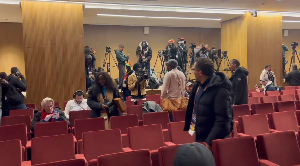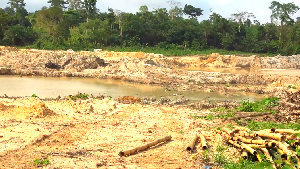A Handbook Review by Joe Kingsley Eyiah, Teacher, Toronto-Canada
A book is the greatest gift one can receive from a friend. We read books and “reading makes a man”, says John Milton, the honorable English writer. The gold -mine of knowledge is the book. And the old Good Book says, “For the lack of knowledge my people perish.” Why perish while you can read?
Language is very crucial to the preservation and the advancement of any culture. Any publication that promotes the learning of languages is worth its ink. It is in this light that I welcome a newly published handbook on how to learn a Ghanaian language (Twi, Ga, Ewe, Hausa) to the readership of Ghanaians in Diaspora. The handbook titled SUA ME ANSA is authored by Kwabena Agyenim Boateng aka Paa Willie of Toronto-Canada in consultation with Professor M. Quartey, Frank Darkwa, Felix Vivor, Gladys Aklah, Zakhari Alhassan, Ilyass Issifu, Clemence Bensah and Oppong Akuoko Jnr.
According to the producers of the book, “the name SUA ME ANSA intends to revise a book written almost seventy years ago that can hardly be found on the book shelves for use at present time. Not unlike this, it mainly signifies the beginning of Language learning from the scratch.” The handbook is a dictionary in four most common Ghanaian languages-Twi, Ga, Ewe and Hausa-which connect and put the rest of the other Ghanaian languages together. Interestingly, the author describes these four languages as the main languages of the four corners of the country-the North, the South, the East and the West!
The handbook is also an earnest attempt to serve the need of all Ghanaian children born abroad and around the globe in their bid to learn languages of their motherland. It is intended to help readers build their vocabulary in those Ghanaian languages.
The book may not be part of a genre. It does not fit into a type like mystery, adventure or romance. However, it is all in all- a multilingual dictionary intended to move readers from one language to the other without much difficulty. It is said that any person who can speak more than one language is “culturally rich.” How true! And if you are interested in learning the Ghanaian languages then your book has arrived.
What I like most about the book is the rich information it provides about Ghana. Pages 6 and 7 of the book deal extensively with the main ethnic groups in Ghana as well as all the languages spoken in the various regions of the country. Page 106 also lists the dialects spoken in Ghana while at page 110 the standard area codes for major cities and towns in the country are provided. All the foreign high commissions/embassies as well as international organizations operating in Ghana can be found from page 111 to page 118. Information on hotels and restaurants in the ten regions of the country is made available at pages 119-128. Last but not the least, all major airlines operating in Ghana are listed in pages 129 and 130. As an Akan, I have never tried to learn the Ewe language on my own but the way this handbook treats the Ewe language, translating sentences from English to Ewe has made it much easier for me to attempt learning the Ewe language. The same translation style goes for the Twi, Ga and Hausa languages in the handbook. The sentences are more of everyday usage and therefore more relevant to practical life. Thanks to the author.
Words selected from the four Ghanaian languages for translation into English and into the other three languages alphabetically are carefully chosen to whip up and sustain the interest of the reader. Alphabets and orthography in the languages have been comprehensively dealt with in this handbook. Names of numerals, days of the week and, months of the year have also been translated from English into those Ghanaian languages.
Dear reader, I recommend that you get a copy of SUA ME ANSA-a handbook to learn a Ghanaian Language- from the publishers of The Global Mirror, Sir Bruce Perrault of Perrault and Associates, Canada Inc. and you won’t regret it. If nothing at all the pictorial presentation of 14 pages on animals, parts of the human body, foods and many objects we use translated into Twi, Hausa, Ga and Ewe from English will fascinate you! Enjoy the handbook.
General News of Wednesday, 9 April 2008
Source: Joe Kingsley Eyiah













